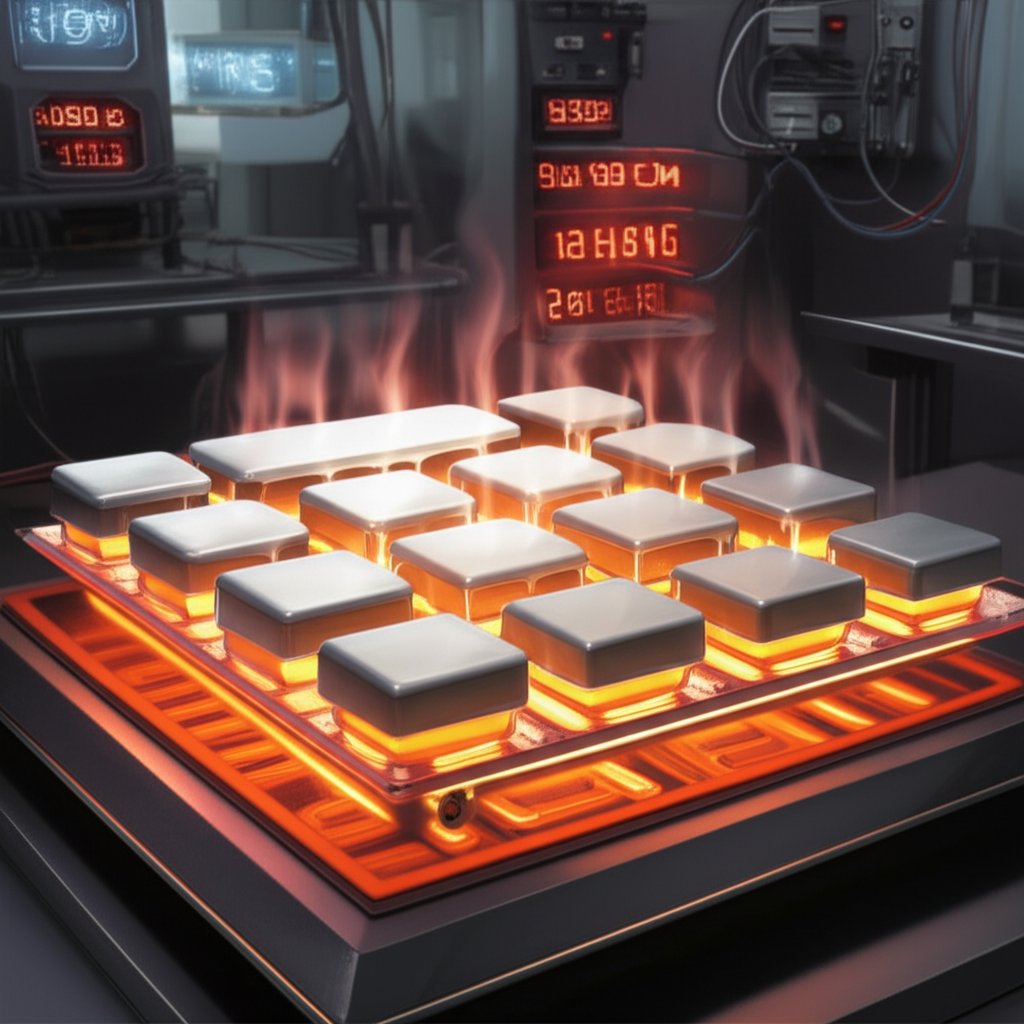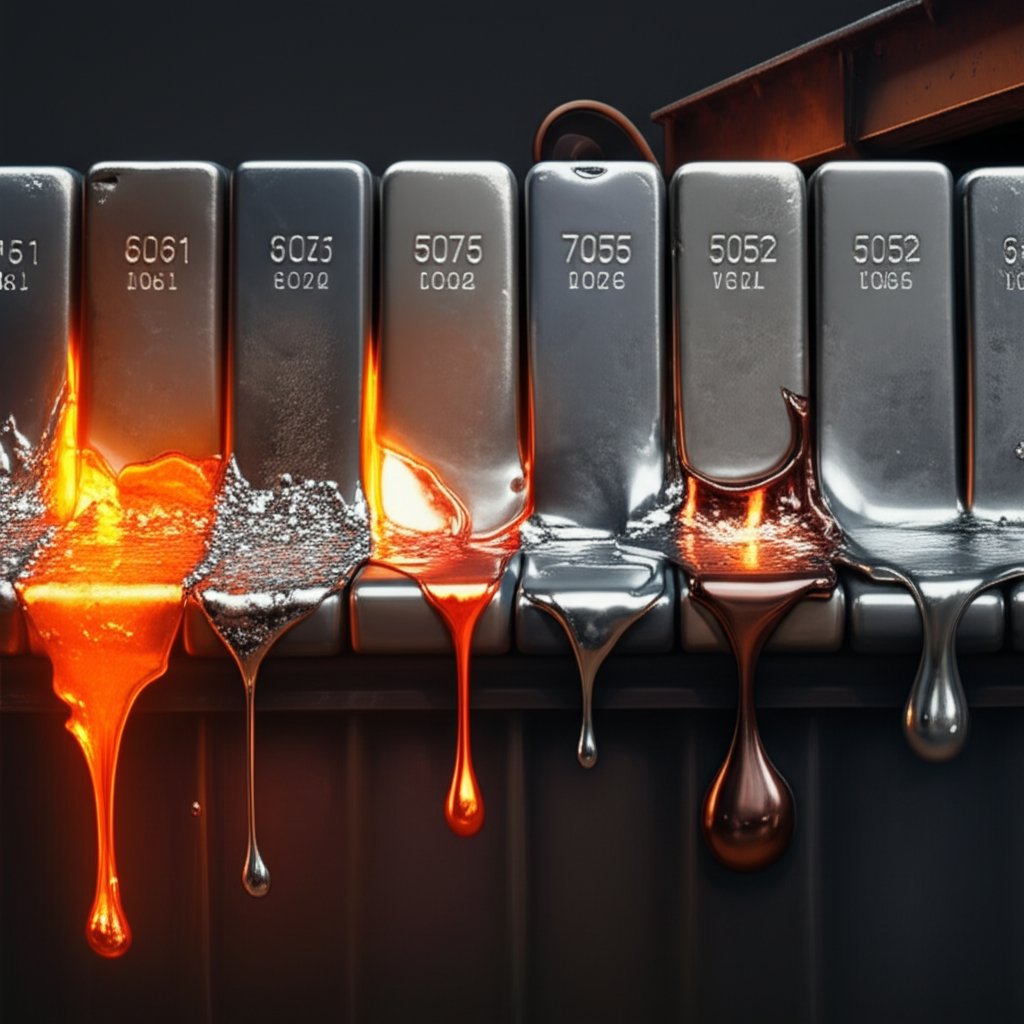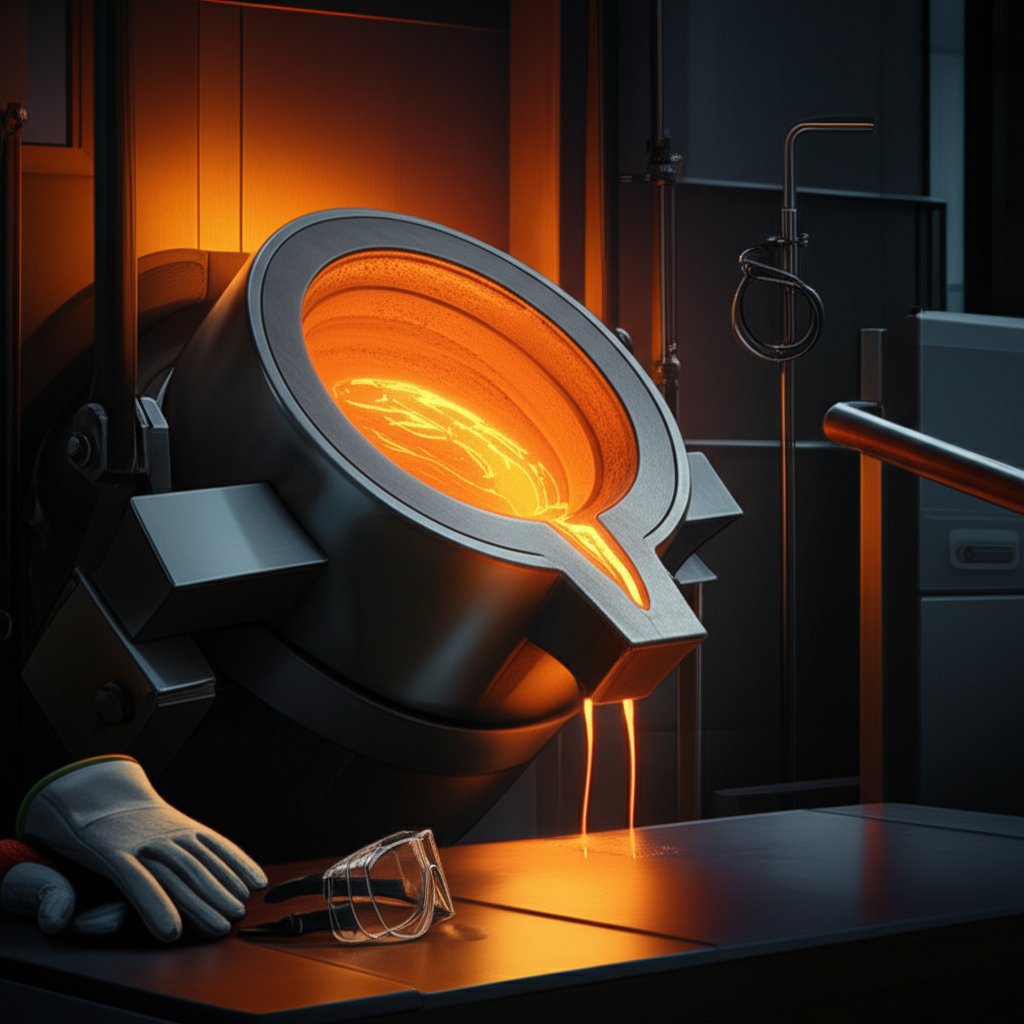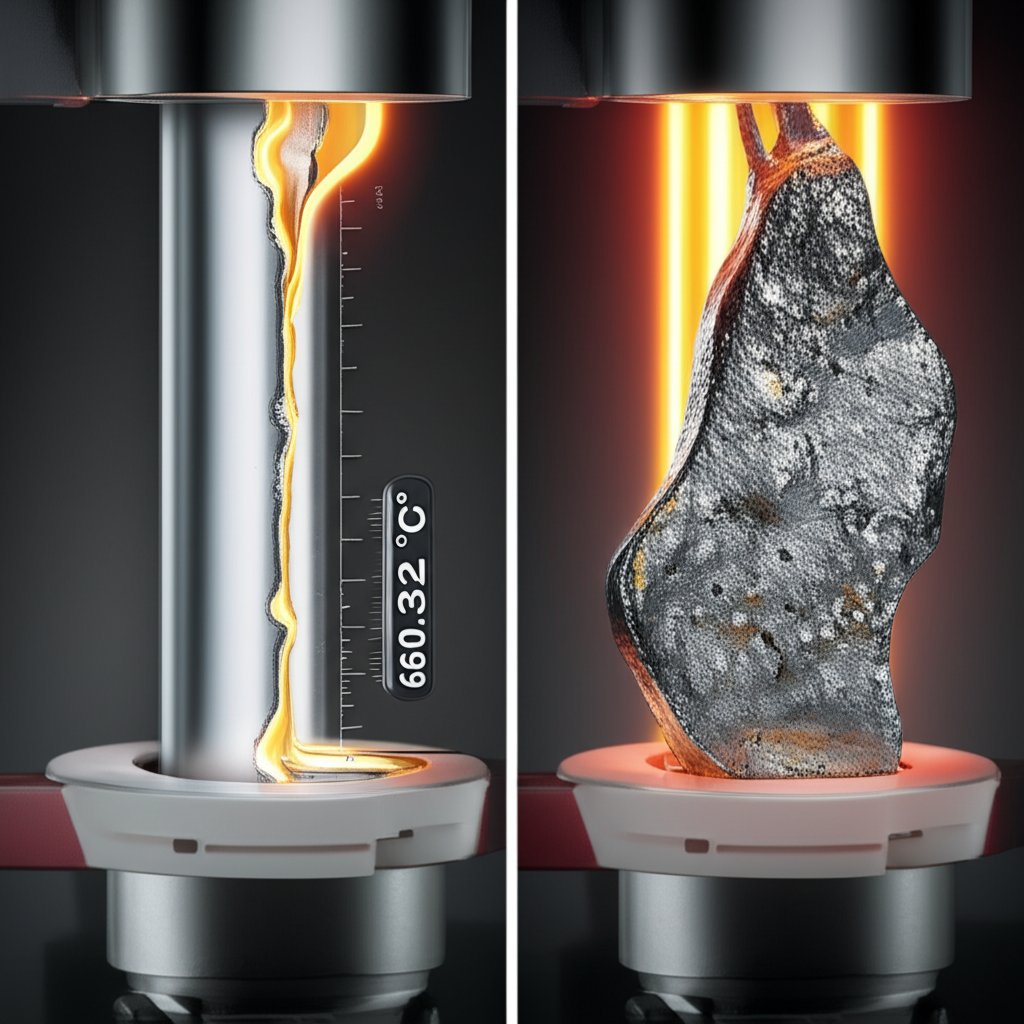
Ever wondered what happens when aluminum is exposed to extreme heat? If you’ve ever watched metal being melted down in a foundry or seen aluminum foil crumple in a hot oven, you’ve glimpsed the importance of understanding the aluminum melting temp. But what exactly does “melting temperature” mean? And why is it so critical in real-world applications?
Defining the Melting Point of Aluminum
In scientific terms, the melting point is the temperature at which a solid turns into a liquid. At this specific temperature, both solid and liquid phases exist in equilibrium. For metals, reaching this point means the atomic bonds holding the solid structure together break apart, allowing the material to flow freely as a liquid. This property isn’t just a laboratory curiosity—it’s a fundamental factor in how metals are processed, shaped, and used in everything from cars to soda cans.
For aluminum, the melting point is notably lower than many other industrial metals, making it easier to work with for casting, recycling, and manufacturing purposes.
Why Aluminum Doesn’t Have a Single, Fixed Melting Point?
Here’s where things get interesting: while pure aluminum has a well-defined melting point, most aluminum used in practice is not pure. Instead, it’s often alloyed with elements like silicon, magnesium, or copper to enhance strength, corrosion resistance, or workability. These additions mean that instead of a single melting point, aluminum alloys have a melting range—a span of temperatures over which the transition from solid to liquid occurs. Even impurities or changes in pressure can shift the melting temperature slightly, making it important to consider the specific material and context.
What’s Ahead in This Guide?
Throughout this article, we’ll dive deeper into:
Whether you’re an engineer, manufacturer, or just curious about what happens to aluminum at high heat, this guide will help you understand the science and practical significance of the melting point of aluminum.
When someone asks, “What is the melting temp of aluminum?,” the answer is both straightforward and surprisingly nuanced. In its purest form—think laboratory-grade aluminum with minimal impurities—the pure aluminum melting point is widely recognized as 660.3°C (1220.5°F). This precise number is a cornerstone for scientists, engineers, and manufacturers, serving as a reference when designing products or planning processes that involve high heat.
Sounds simple, right? But here’s the catch: this standard melting point applies only to aluminum that is nearly 100% pure. In real-world applications, you’ll rarely encounter aluminum in this state. Most commercial and industrial aluminum contains small amounts of other elements—either as intentional alloying agents or as trace impurities from processing and recycling. These additions can shift the melting temperature, sometimes significantly.
Think of the pure aluminum melting point as a baseline—a starting reference for evaluating how different alloys or products will behave under heat. For example, while pure aluminum melts at 660.3°C, many alloys or recycled materials may start to soften or liquefy at lower temperatures due to the presence of other elements. This is why, if you’re working with aluminum in manufacturing, construction, or recycling, you can’t always rely on a single, fixed number.
Understanding this baseline is crucial as we move forward to explore how alloying and other factors influence the melting range of aluminum in practical settings.

Imagine you’re preparing to melt aluminum for a project. You’ve read that the melting point is 660°C (1220°F), but your aluminum doesn’t always behave as expected. Sometimes it starts to soften at a lower temperature, or it doesn’t fully liquefy until you go even hotter. What’s going on? The answer lies in the concept of the aluminum melting range—and the many factors affecting the melting point of aluminum in real-world scenarios.
In practice, pure aluminum is rarely used outside of specialized applications. Most everyday aluminum products—whether they’re car parts, beverage cans, or building materials—are made from aluminum alloys. These are blends of aluminum with other elements like copper, magnesium, silicon, or zinc. Why? Because alloying improves properties like strength, corrosion resistance, and workability. But here’s the catch: alloying also changes how—and when—aluminum melts.
So, what does this mean for your project or manufacturing process? Instead of expecting aluminum to melt sharply at one temperature, you’ll notice a range—sometimes spanning 30°C or more—where the metal gradually transitions from solid to liquid. For instance, common alloys like 6061 may start melting around 582°C (1080°F) and not fully liquefy until 651°C (1204°F). This melting range is a direct result of alloying, impurities, and processing variables.
Understanding these factors not only helps you predict how aluminum will behave under heat, but also guides your choice of materials and processing techniques. Next, let’s see how these principles play out in everyday items like aluminum foil and cans—where alloying and impurities create subtle but important differences in melting behavior.
Ever wondered why aluminum foil rarely melts in your oven, but an aluminum can can survive even higher temperatures? When you use these everyday items, you’re actually handling different forms of aluminum—each with its own unique melting behavior. Let’s break down the science behind the aluminum foil melting temp and the melting temp of aluminum can, so you can better understand their performance in your kitchen and beyond.
Picture this: you wrap a baked potato in foil, toss it in a 450°F oven, and the foil comes out unchanged. That’s because the melting point of aluminum foil is around 660°C (1220°F). This temperature is far above anything you’ll encounter in home cooking or baking. So, why doesn’t foil melt or even deform under normal kitchen conditions?
Still, foil isn’t invincible. If exposed to direct flames or extremely high heat (think: broilers or open fire), it can discolor, weaken, or even melt. But in most household ovens, the foil stays solid and safe.
Now, let’s look at beverage cans. Unlike foil, aluminum cans are engineered to be strong and durable. This strength comes from their alloy composition—usually a mix of aluminum with small percentages of magnesium, manganese, iron, silicon, and copper (RecycleNation). These alloying elements make cans tougher and slightly alter their melting behavior.
To make things clearer, here’s a quick comparison of the typical melting temperatures for aluminum foil and cans:
| Product | Typical Alloy Content | Melting Range (°C) | Melting Range (°F) |
|---|---|---|---|
| Aluminum Foil | 92–99% Al, minor Mn | ~660 | ~1220 |
| Aluminum Can | Al, Mg, Mn, Fe, Si, Cu | 630–670 | 1166–1238 |
Understanding these differences helps you use aluminum products more safely and effectively—whether you’re baking, recycling, or simply curious about the science behind everyday materials. Next, we’ll explore how the specific melting ranges of popular aluminum alloys—like those used in construction and industry—compare to these household items.

If you’ve ever asked, “What temp does aluminum alloy melt?,” you might expect a single, tidy number. But here’s the reality: most aluminum alloys don’t melt at a precise temperature—instead, they transition from solid to liquid over a range of temperatures. This melting range is crucial to understand whether you’re casting, welding, or selecting materials for high-performance applications.
Let’s break it down. Every aluminum alloy has two key melting thresholds:
Between these two, the alloy exists as a mixture of solid and liquid phases. The distance between solidus and liquidus—often 50–80°C wide—defines the melting range. This range is shaped by the alloy’s composition, with each element (like magnesium, silicon, or copper) affecting how and when the metal melts.
To see how this works in practice, let’s look at the melting behavior of three widely used aluminum alloys: 6061, 7075, and 3003. These alloys are found everywhere—from aircraft frames to construction beams and beverage cans. Here’s how their melting ranges compare:
| Alloy | Solidus Temp (°C) | Liquidus Temp (°C) | Solidus Temp (°F) | Liquidus Temp (°F) | Typical Applications |
|---|---|---|---|---|---|
| 6061 | 582 | 652 | 1080 | 1205 | Structural parts, frames, automotive, bicycle components |
| 7075 | 477 | 635 | 890 | 1175 | Aerospace, high-strength applications, sporting goods |
| 3003 | 643 | 655 | 1190 | 1210 | Chemical equipment, cookware, roofing, heat exchangers |
What’s the takeaway? For example, the melting temp of aluminum 6061 begins at 582°C (1080°F) and finishes at 652°C (1205°F). This broad range means that 6061 can be partially molten while still holding some shape, which is useful in processes like forging or semi-solid metalworking (ASM MatWeb). In contrast, 7075 starts melting much lower, which is important for designers who need to manage heat in high-stress environments.
Imagine you’re fabricating a lightweight automotive frame. Choosing 6061 for its blend of strength and corrosion resistance, you’ll want to keep your process temperatures within its melting range to avoid compromising the structure. Or, if you’re manufacturing aerospace parts with 7075, knowing its lower solidus temperature helps you prevent accidental melting during heat treatment or repair.
Achieving reliable, consistent results in any aluminum-based project starts with sourcing alloys that meet strict composition and quality standards. High-quality manufacturers like Shengxin Aluminum offer precisely controlled alloy formulations, ensuring you get predictable melting behavior every time. This consistency is especially important for demanding industries—like transportation, construction, or electronics—where even small variations can impact performance or safety.
Understanding the melting temp of aluminum alloys is more than just a technical detail—it’s the foundation for successful design, safe manufacturing, and long-lasting products. Next, we’ll dig deeper into the specific factors that alter these melting ranges, from alloying elements to impurities, so you can make the best choices for your next project.
When you’re working with aluminum—whether in manufacturing, recycling, or engineering—one thing quickly becomes clear: not all aluminum melts the same way. Why is it that two seemingly identical pieces can behave so differently under heat? The answer lies in the subtle science of aluminum alloy composition, impurities, and even the metal’s internal structure. Let’s break down the main factors that influence the melting behavior of aluminum and its alloys.
Imagine you’re designing an aluminum product for a specific purpose. Do you need it to be strong, lightweight, or easy to cast? The choice of alloying elements—what you add to the aluminum—has a huge impact not just on performance, but also on how and when the metal melts.
Ever wondered why recycled or commercial-grade aluminum sometimes melts at a lower temperature than laboratory-pure metal? That’s the impurities effect on aluminum melting. Even tiny amounts of iron, silicon, or copper—left over from previous uses or introduced during manufacturing—can disrupt the orderly crystal structure of aluminum, making it easier (or occasionally harder) for the solid to become liquid.
In general, the higher the purity of aluminum, the more precisely it will melt at its standard temperature (660°C/1220°F). Lower purity means more variability and a broader melting range.
It’s not just what’s in the aluminum—it’s how it’s made and processed. Here are a few more factors that can change the melting behavior:
| Factor | General Effect |
|---|---|
| Alloying with Silicon | Lowers melting point, improves castability |
| Adding Magnesium | Can raise or lower melting point depending on concentration |
| Adding Copper | Lowers melting point, increases strength |
| Adding Zinc | Lowers melting point, increases strength |
| Impurities (Iron, Silicon, etc.) | Usually lower melting point and broaden melting range |
| Grain Size | Finer grains = more uniform melting |
| Heat Treatment | Can improve or reduce melting uniformity |
| Pressure | Higher pressure = slightly higher melting point |
Understanding these variables isn’t just academic—it’s essential for anyone who needs to control, predict, or optimize the melting of aluminum in practical settings. Up next, we’ll look at how these factors play out when you’re actually trying to achieve the right temperature to melt aluminum in a workshop or industrial environment.

Ever wondered what it really takes to reach the temp to melt aluminum—and do so safely, whether you’re in a factory or your own workshop? Whether you’re recycling cans, casting parts, or experimenting with DIY foundries, achieving the right temperature and uniform heating is essential for quality, safety, and efficiency. Let’s break down the practical steps, equipment options, and safety essentials for melting aluminum the right way.
Aluminum’s relatively low melting point (about 660°C or 1220°F) means you don’t need industrial-scale equipment to liquefy it, but you do need the right tools for consistent results:
Melting aluminum is not just about reaching the right temperature—it’s about doing it safely. Here’s what you need to know to melt aluminum safely in any setting:
Imagine spending time and energy reaching the perfect melting temperature—only to find your aluminum behaves unpredictably. This is where material quality makes all the difference. High-quality aluminum, like that produced by Shengxin Aluminum, offers consistent composition and minimal impurities, ensuring predictable melting behavior and reducing the risk of defects or contamination. For processes that demand precise thermal control—such as casting, extrusion, or manufacturing high-performance components—starting with reliable, certified aluminum is the foundation for success.
Mastering the art of reaching and maintaining the right temp to melt aluminum isn’t just about equipment—it’s about safety, preparation, and choosing the best materials. Next, we’ll clarify the real-world meaning of “at what temp does aluminum melt,” especially when dealing with alloys and melting ranges.
When you search for answers to “at what temp does aluminum melt” or “what temp does aluminum melt at,” you might expect a single, clear number. But if you’ve worked with aluminum alloys or recycled scrap, you’ll notice the reality is a bit more nuanced. Let’s break down why the answer depends on what type of aluminum you’re using—and what it really means for your project or application.
Pure aluminum is straightforward: it melts at 660.3°C (1220.5°F). This is a sharp, well-defined temperature—think of it as a precise “on/off” switch between solid and liquid. If you heat pure aluminum, it stays solid until it hits this exact point, then transitions rapidly to liquid.
Aluminum alloys, on the other hand, don’t behave this way. Instead of a single melting point, they have a melting range. This range is defined by two key temperatures:
Between the solidus and liquidus, the alloy is a mix of solid and liquid—imagine a slushy or partially melted ice cube. For example, a common alloy like 6061 might start to melt at 582°C (solidus) but not become fully liquid until 652°C (liquidus).
| Material | Melting Point or Range (°C) | Melting Point or Range (°F) | Type |
|---|---|---|---|
| Pure Aluminum | 660.3 | 1220.5 | Single Point |
| 6061 Alloy | 582–652 | 1080–1205 | Range (Solidus–Liquidus) |
| 7075 Alloy | 477–635 | 890–1175 | Range (Solidus–Liquidus) |
Bottom line? If you’re working with pure aluminum, you can rely on a precise melting point. But for most real-world alloys, always check the solidus and liquidus temperatures—because “at what temp does aluminum melt” is almost always a range, not a single number. This knowledge helps you avoid costly mistakes and ensures the quality and safety of your finished product.

Ever wondered why some aluminum melts smoothly at a precise temperature, while other types seem to soften or liquefy over a range? If you’re planning a project or troubleshooting a process, understanding this aluminum melting point comparison can save time, prevent mistakes, and help you choose the right material for the job. Let’s break down the key differences between pure aluminum vs alloy melting—and see how these distinctions impact real-world applications.
Imagine you’re heating a block of pure aluminum. As soon as the temperature hits 660.3°C (1220.5°F), the entire block transitions rapidly from solid to liquid. This sharp, well-defined melting point is a hallmark of high-purity metals, where the atomic structure is uniform and undisturbed by other elements.
Now, picture an aluminum alloy—say, 6061 or 7075. Instead of melting all at once, the alloy starts to soften at a lower temperature (the solidus), then gradually becomes fully liquid as the temperature rises to the liquidus. This melting range can span 50–150°C, depending on the alloy’s recipe. The reason? Alloying elements like magnesium, copper, silicon, and zinc disrupt the uniform crystal lattice, creating a blend of phases that melt at different rates.
Let’s make this even clearer with a side-by-side look:
| Material | Melting Point or Range (°C) | Melting Point or Range (°F) | Melting Behavior | Common Uses |
|---|---|---|---|---|
| Pure Aluminum | 660.3 | 1220.5 | Sharp, single point | Electrical conductors, specialty foils, lab-grade materials |
| 6061 Alloy | 582–652 | 1080–1205 | Melting range (solidus to liquidus) | Structural parts, automotive frames, bike components |
| 7075 Alloy | 477–635 | 890–1175 | Wide melting range | Aerospace, high-strength parts, sporting goods |
| 3003 Alloy | 643–655 | 1190–1210 | Narrow melting range | Heat exchangers, cookware, roofing |
So, what’s the practical takeaway? If you need a material that melts cleanly and predictably, pure aluminum is the go-to choice. But for most structural, automotive, or aerospace applications, alloys offer a blend of properties—at the cost of a broader, less predictable melting range. Knowing these differences helps you select the right aluminum for your needs and avoid surprises when the heat is on.
When you think about working with aluminum, it’s easy to assume there’s just one melting point to remember. But as you’ve seen, the story is far more nuanced. The aluminum melting temp isn’t a one-size-fits-all number—it shifts based on purity, alloying elements, and even trace impurities. Sounds complex? It can be, but understanding these differences is what separates successful projects from costly mistakes.
Bottom line: Mastering the melting behavior of aluminum—pure or alloyed—empowers you to make smarter choices, avoid surprises, and achieve superior results in any application.
Imagine the confidence you gain when you know your aluminum will perform exactly as expected, every time. That’s the advantage of sourcing high quality aluminum alloys from reputable suppliers. Companies like Shengxin Aluminum are dedicated to delivering consistent, precisely formulated alloys—helping you achieve reliable melting, superior product quality, and peace of mind in every project. Please check the blog post to confirm this point.
So, whether you’re casting, recycling, or designing the next breakthrough product, remember: understanding and controlling the aluminum melting temp isn’t just a technical detail—it’s the key to unlocking the full potential of this versatile metal.
Aluminum can be challenging to melt precisely because its melting temperature is influenced by impurities and alloying elements. Pure aluminum melts at 660°C (1220°F), but even small amounts of other metals or contaminants can shift this temperature or create a melting range. Identifying and controlling these impurities is essential for achieving predictable melting behavior, especially in industrial or recycling processes.
Aluminum foil can withstand temperatures up to around 660°C (1220°F) before it begins to melt. In home ovens, foil remains solid and safe, but direct exposure to open flames or extremely high heat, such as in a self-cleaning oven or foundry, can cause it to deform or melt. Always avoid using foil in situations where temperatures may exceed these limits.
The melting point of aluminum alloys depends on their specific composition, including elements like silicon, magnesium, copper, and zinc. Impurities, grain size, heat treatment history, and even processing conditions such as pressure and heating rate can all influence when and how the alloy melts. These factors often result in a melting range rather than a single melting point.
Melting aluminum safely requires proper equipment, such as electric or gas-fired furnaces, induction furnaces, or well-insulated DIY foundries. Key safety practices include wearing heat-resistant protective gear, ensuring good ventilation, using appropriate crucibles, and preheating equipment for uniform melting. High-quality aluminum, like that from Shengxin Aluminum, ensures reliable melting and reduces the risk of unpredictable results.
High-quality aluminum alloys offer consistent composition and minimal impurities, which leads to predictable melting behavior and superior product performance. Manufacturers like Shengxin Aluminum provide precisely formulated alloys, supporting industries that demand strict quality control for applications in transportation, construction, and advanced manufacturing.
 خدمة الإنترنت
خدمة الإنترنت 0086 136 3563 2360
0086 136 3563 2360 sales@sxalu.com
sales@sxalu.com +86 136 3563 2360
+86 136 3563 2360